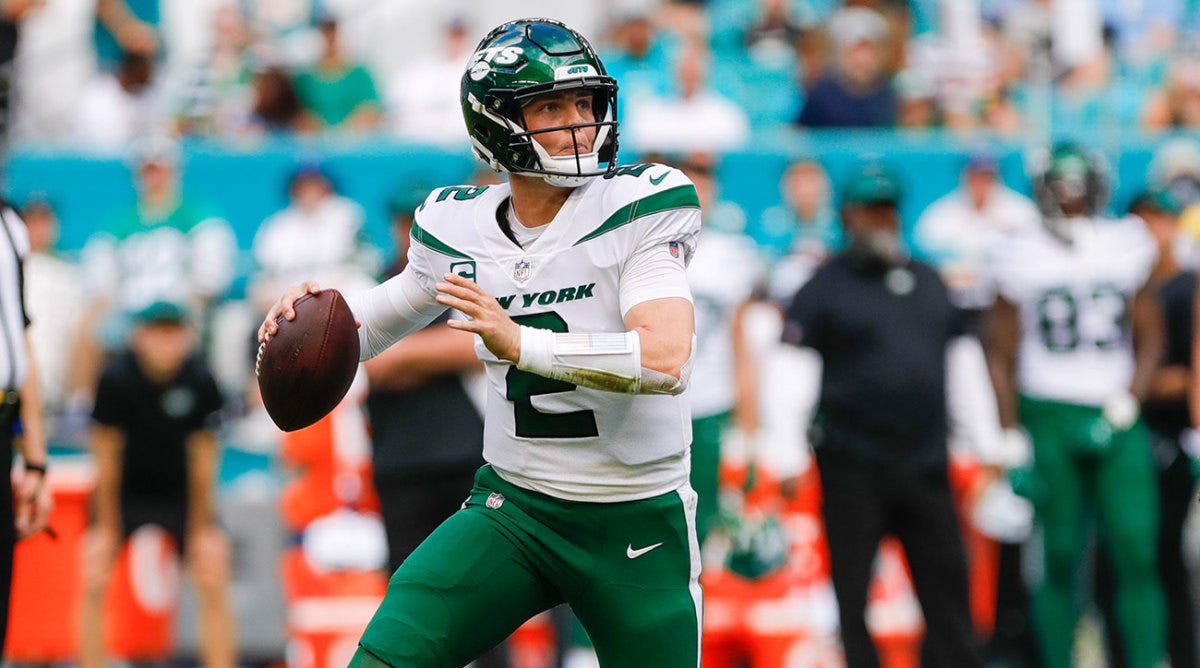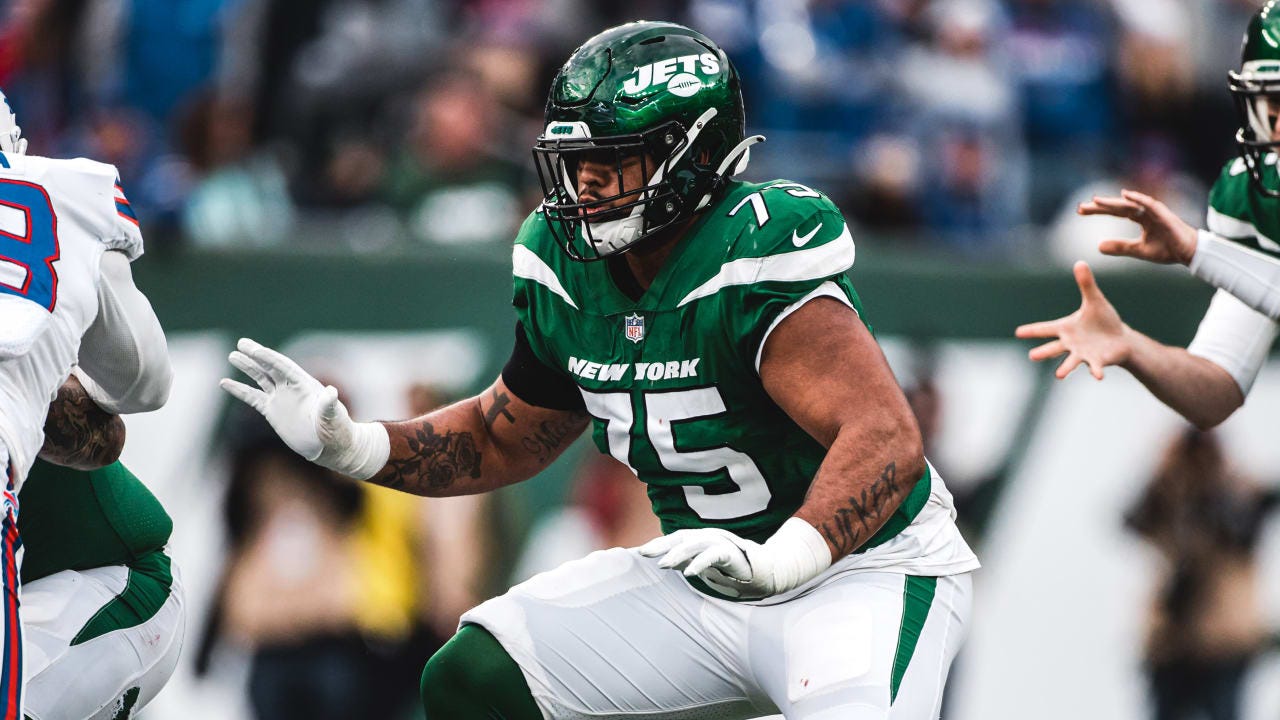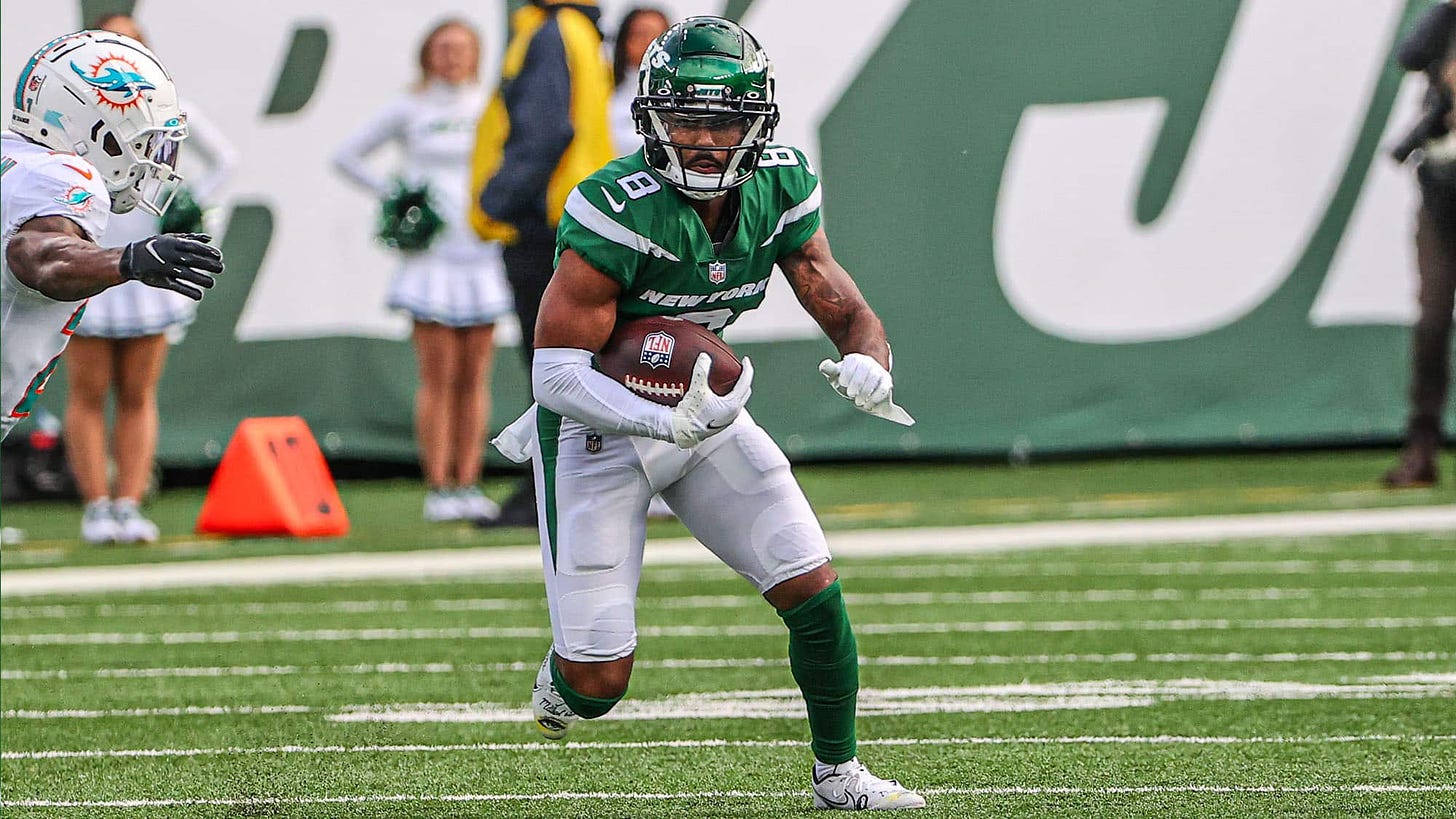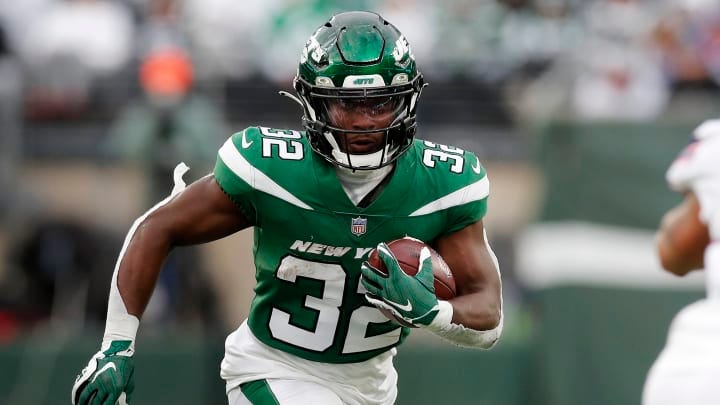☀️ Good Morning!
We’re officially 100 days away from the start of the new NFL season, there is real optimism that the Jets can be playing meaningful football into December and I’m here for it.
There really hasn't been a great deal of news over the weekend so we’re going to dive straight into the topic for today, analyzing how the Jets rookie class did in year one.
Today we’re going to focus on the top four guys.
🚨⚪🔴🔵 Sauce & CJ Mosley were in the building on Saturday to see the NY Rangers win game 6 against Carolina. The Jets have been out in force at Ranger games recently, soaking in that playoff atmosphere.
🦁👑 While some took in the sports scene of New York, Jets’ first-round pick Jermaine Johnson was taking in Broadway. While the Rangers battled away at MSG, Johnson was watching the Lion King, I’ve not seen that on stage but apparently, it’s outstanding.
🏕️🔥 Zach Wilson will be heading to Nashville to attend George Kittle’s Tight End University camp. He’ll be joined by teammate Tyler Conklin who accepted an invitation.
✍️ According to Brian Costello of the New York Post the Jets are still very interested in signing former Saints linebacker Kwon Alexander. It’s been quiet on the Kwon front since he visited the Jets several weeks ago, who knows what the holdup is but in situations like this, it’s usually financial.
Zach Wilson
Wilson is a very difficult evaluation, at times he looked lost, and at times he flashed the kind of potential that had the Jets clamouring to draft him.
He got better as his supporting cast got worse, it’s all about finding the balance with Wilson. Pushing the ball downfield and being aggressive is part of his game, you don’t want him to become a game manager, but at the same time, he has to look after the football.
Let’s dive into his stats and rank among QBs who had at least 400 dropbacks.
Completion Percentage - 55.6% (30/30)
Yards - 2,334 (30/30)
Touchdowns - 9 (30/30)
Interceptions - 11 (11/30)
Yards per Attempt - 6.1 (28/30)
Big Time Throw Percentage - 2.5% (26/30)
Turnover Worthy Play Percentage - 3.8% (22/30)
Adjusted Completion Percentage - 69.9% (30/30)
Percentage of Pressures turned to Sacks - 26.3% (28/30)
Time to Throw - 3.05 seconds (28/30)
NFL Passer Ratings - 69.7 (30/30)
Whichever way you try and spin it the numbers don’t look great. Wilson experienced a lot of drops, but even his adjusted completion % was last in the league and only two QBs in the NFL with 400 dropbacks took more time to let go of the football.
The positive is that a lot of the damage was done early and he was noticeably more comfortable when he returned from a mid-season injury. His footwork was better against Tampa Bay towards the end of the season and he was more decisive with his reads, trusting his eyes and letting the ball go.
If you’re looking at the stats and the stats alone, it’s easy to see why some fans think we’re crazy to be so high on Zach, but stats don’t always tell the whole story. They would account for the little things like footwork and mechanical improvements, he also didn’t throw a single interception over his final 5 games.
This late-season surge is notable because of the injuries the Jets sustained at the back end of the season. Tariq Black was getting serious run as the main target in the receiving game and the patchwork offensive line allowed 6 sacks against Miami and 8 sacks against Buffalo.
It may be crazy to say this but I feel much more confident about Zach post-2021 than I did immediately after we drafted him.
Alijah Vera-Tucker
AVT will be asked to move to the right side of the line to accommodate prized free-agent acquisition, Laken Tomlinson. Moving positions won’t concern the 2nd year man considering he spent his 2018 season at right guard before moving to left guard in 2019, then he went to left tackle in 2020 and slotted in at left guard for the Jets in 2021.
The hope is that AVT can find a permanent home at right guard for the Jets and experience some consistency in where he’s lining up, moving all around the line couldn’t have been easy.
How did AVT rank among NFL guards who played at least 600 snaps?
PFF Offensive Grade: 66.8 (36/63)
PFF Run-Block Grade: 72.5 (17/63)
PFF Pass-Block Grade: 56.9 (43/63)
Sacks Allowed: 2 (17/63)
Pressures Allowed: 42 (58/63)
Pass-Blocking Efficiency: 96.6 (46/63)
Penalties Conceded: 5 (34/63)
Interestingly AVT’s run-blocking is way ahead of his pass-protection following his rookie season, but he was actually a better pass-protector in college grading out higher in protecting the QB every single year at USC.
Obviously, he’s facing much better competition at the NFL level but there is a reason for optimism there considering his historical success at keeping the QB upright. We can’t forget that AVT spent the entire off-season working next to Becton only to play the majority of the season with Fant.
He also ended the season strongly with only 7 pressures allowed over his final 4 games after starting the season allowing 12 pressures in his first three games. One of his best games of the season came against Tampa Bay in week 17 where he allowed a single pressure on 36 pass-blocking snaps.
Elijah Moore
Moore missed 6 games in his rookie season which stunted some of his development, but for a brief period, he was one of the hottest receivers in the NFL.
In the five games between weeks 8-12 he recorded 28 catches for 392 yards and 5 touchdowns, impressive stuff for any receiver.
Here’s how Moore ranked against other receivers who had at least 70 targets:
Reception % - 58.1% (46/53)
Yards per Reception - 12.5 (28/53)
PFF Offensive Grade - 71.2 (35/53)
Yards After Catch - 204 (43/53)
Yards After Catch per Reception - 4.7 (19/53)
Drops - 2 (5/63)
Drop Percentage - 4.4% (18/53)
Contested Catch Success Rate - 40% (41/53)
NFL Passer Rating when Targeted - 80.8 (45/53)
Moore’s season can largely be split into two halves, the first 7 games where he failed to record a receiving touchdown and then weeks 8-12 as mentioned above, a period where he absolutely exploded onto the scene.
Like with any position there is an adjustment period and Moore never looked overly comfortable during the early portion of the schedule, especially in the two games against New England where he was targeted 14 times but caught just 5 passes for 60 yards.
His breakout performance came against Miami in week 10 where he caught 8 of 11 targets for 141 yards and a touchdown, it was a dominant performance that wet the appetite of Jets fans, unfortunately, he didn’t appear in any games after week 12.
Moore played inside and out during this rookie year spending 70.8% of his time outside and 28.3% in the slot and he had success in both. His versatility is one of the attributes that make him an appealing prospect heading into 2022.
His yards after the catch may look a little pedestrian but his yards after the catch per reception were top 20 in the league last year and I expect that to only improve in year two.
Michael Carter
Like Elijah Moore, Carter’s rookie season was one of incredible flashes of potential and injury frustration.
Carter only missed three entire games but he seemed banged up on numerous occasions and as the offensive lineman started dropping his job became much more difficult.
He did have some statement games, his 118-yard performance against Jacksonville was noteworthy, but his 77-yard rushing, 9-catch 95 yard performance against Cincinnati may have been his best.
So how did Carter match up against all running backs who had a minimum of 140 rushing attempts:
Rushing Yards: 639 (25/33)
Rushing yards per Attempt: 4.3 (14/33)
Touchdowns: 4 (25/33)
Fumbles: 1 (7/33)
PFF Offensive Grade: 71.0 (16/33)
Yards after contact: 495 (24/33)
Yards after contact per Attempt: 3.37 (5/33)
Missed Tackles Forced: 39 (12/33)
PFF Receiving Grade: 58.9 (23/33)
PFF Pass Blocking Grade: 42.7 (26/33)
Drops: 5 (25/33)
Elusive Rating: 99.4 (2/33)
There are some really interesting numbers in here, but my eye is instantly drawn to that 3.37 yards after contact per rushing attempt number which was elite at 3.37. Making things happen after contact is a very desirable trait and Carter being top-5 as a rookie is a good sign of what’s to come.
You may be wondering what the elusive rating is, that’s a PFF signature stat that measures a running back’s success and impact independent of the blocking. Only Nick Chubb came out with a higher rating than Michael Carter, and considering the Jets have upgraded their blocking this year (hopefully) that’s a key metric to watch. If he was that good independent of his blocking, which was at points quite sketchy, imagine what he’ll do with better players in front of him.
There are some obvious things to work on, his pass blocking needs to improve if he wants to stay in the game on obvious passing downs, and 5 drops is a lot for someone who was targeted 50 times over the season, especially when these passes tend to be short dump-offs or swing passes.
The good news here is that like so many other rookies on this list and around the league, he improved as the season progressed. He had just one drop over his final 7 games with the Jets after having 4 in his first 7. He also forced 17 missed tackles over his final 5 games, he was trending in the right direction as the curtain came down on the season.










The importance of growth in the second year can’t be overstated. Second year in the system. Second year for this coaching staff. Second year of the Medical Staff with Strength & Conditioning. The Jets are off to a good start with a good offseason FA & Draft., Players coming back from injury, and OTA’’s seem well attended. Increased competition at most positions , Jets may actually cut some good players this year, But it’s all about continued growth. June first cuts are coming up, Jets don’t have any obvious candidates, but there maybe opportunities. Banging the Drum that the Jets CAP is tight, cuts and restructures on the horizon,
FYI It's "whet" your appetite, not "wet".